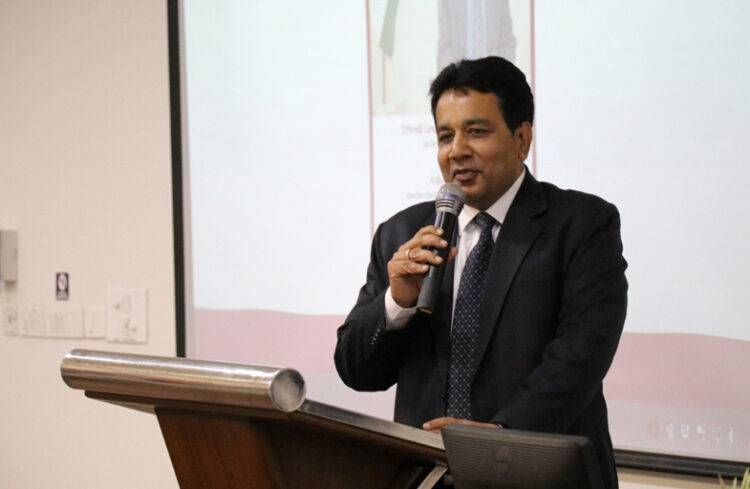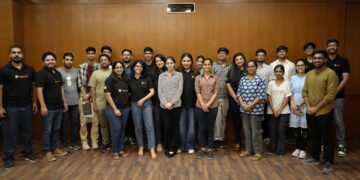Pranav Gupta Ashoka University founder and his goal is to turn India into a knowledge economy by transforming Higher Education.
The Education Ministry has launched the CUET to standardize the admission process at India’s central universities, as well as many other institutions, through NTA. Founded in 2017, the National Testing Agency administers the computer-based, multiple-choice exam. There will be a high level of competition since more than 100 institutions as well as 45 central universities in India will be accepting applications.
This differs significantly from the traditional method of selecting students for admission based on their class 12 board exam scores. With the introduction of the CUET, all students have the opportunity to apply to top universities and take this common entrance test. Several experts are concerned that the single admission exam will lose the weight and significance of the 12th grade. This is probably not true since the CUET syllabus is based entirely on the curriculum for class 12. Through this procedure, both the syllabus for the 12th standard and the equity of admissions will be balanced.
“The country’s higher education system is being reformed through CUET. After the introduction of CUET, it is envisaged that the entire test procedure would be transparent and students will learn about their ranks and the appropriate university merit list. They will be able to focus on being accepted to the desired institution since they will have a clear grasp of their preferences”, opines Pranav Gupta Ashoka University’s Co-Founder.
The CUET rush will likely have its own unique features, but the widely favored high cut-off procedure is likely to end. All institutions will now administer a common entrance exam, and admissions will be determined based on both CUET scores and the weighted average from the 12th grade. Many universities plan to participate in CUET, so they can discontinue the multiple entrance tests that they conduct. Through CUET, students’ educational aspirations will be prioritized and they will have a fair chance to apply to colleges.
“With the uniform entrance test for all institutions, ever-rising cut-offs, as witnessed in many central universities, will come to a stop and students’ critical thinking skills will be emphasized above rote learning. There is always some type of discrimination based on a student’s 12th grade scores since various boards do not issue marks consistently, which denies equal opportunity to applicants to study in esteemed universities. I believe CUET will treat applicants from various boards equally and give them fair chance to pursue higher education in their preferred college”, says Pranav Gupta.
In many ways, the Common University Entrance Test (CUET) is a significant decision. We may be able to streamline the admissions process and ease the financial burden by eliminating multiple entrance examinations. Many colleges lack adequate funding, resources, and student enrolment, and CUET could benefit them.
A number of conflicting emotions and detailed opinions exist regarding the initiative’s shortcomings and implementations in light of the rural-urban divide, the lack of infrastructure required, the impacts on institutions serving underrepresented groups, as well as the effects on marginalized students. There is a perception that instead of resolving the inconsistencies in the board results, students have been forced to take another test. Also, many worry that CUET will promote coaching-class ethos as the board exam effectively becomes obsolete.
“CUET may make education more accessible as there is a greater chance of generating equitable opportunity for students from underprivileged and marginalized sections, and rural areas. From a pool of several institutions, CUET will assist students in selecting one for their graduate study. However, certain legitimate concerns that can occur as a result of CUET must be handled by the University Grants Commission (UGC). The coaching-class culture is expected to increase, as we have seen with JEE and NEET.
The UGC must introduce specific norms to minimize the negative effects on poor and marginalized students, especially those from rural regions who lack resources. But it has been repeatedly emphasized that the NCERT textbooks used for class 12 are the pertinent materials for the CUET. The balance of several senior secondary boards, varied curricula, the integrity of 10+2 tests, geographical variances, distantly placed colleges, and other factors need particular consideration in order to ensure justice.
CUET can bring positive changes in the field of education but its implementation should be ensured in a manner that its shortcomings are tackled effectively and even though certain exam administration issues exist, but they will be resolved over time as the merits outweighs the demerits”, concludes Pranav Gupta Ashoka University founder and co-founder Jamboree Education.



















